Toran: Indian Decor for Welcome and Prosperity
The word Toran originally referred to sacred gateways in Indian architecture, with roots in both Buddhism and Hinduism. A notable example is the Kirti Toran, a 12th-century sandstone architecture in Vadnagar, Gujarat. Over time, the tradition evolved, particularly among the Gujarati community, where handmade torans are hung above doorways as a symbol of welcome. These decorative pieces represent love, prosperity, health, luck, happiness, and wealth. In the Vedic period, torans were crafted from mango leaves and marigold flowers, often used during auspicious occasions. Today, they continue to hold deep cultural significance, playing an essential role in various celebrations and rituals.
History of Toran
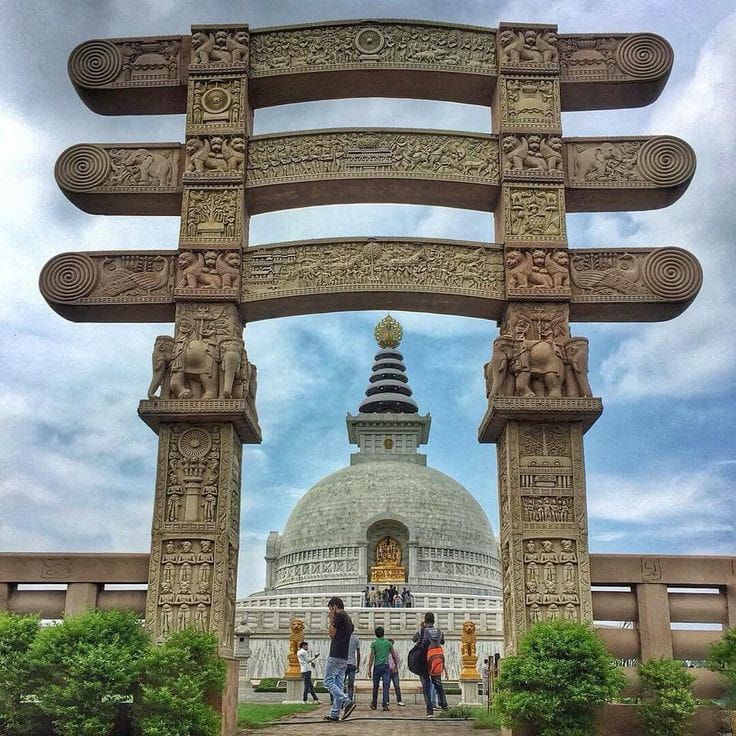
Torana of Sanchi Stupa (image source: Pinterest)
The origin of Torans can be traced back to the Puranas, with the word derived from the Sanskrit term "torana," meaning "to pass." This tradition is evident in ancient Buddhist architecture, where torans were integral features. Typically, a toran consists of a projecting crosspiece resting on two upright posts, often with three bars stacked one above the other. Both the crosspiece and posts are usually intricately sculpted. The earliest archaeological evidence of torans dates back to the time when the Sanchi Stupa was built. Additionally, in Kalinga architecture, torans can be seen in many temples, such as the Jagannath Temple, Mukteswar Temple, and Rajarani Temple.
Cultural Significance
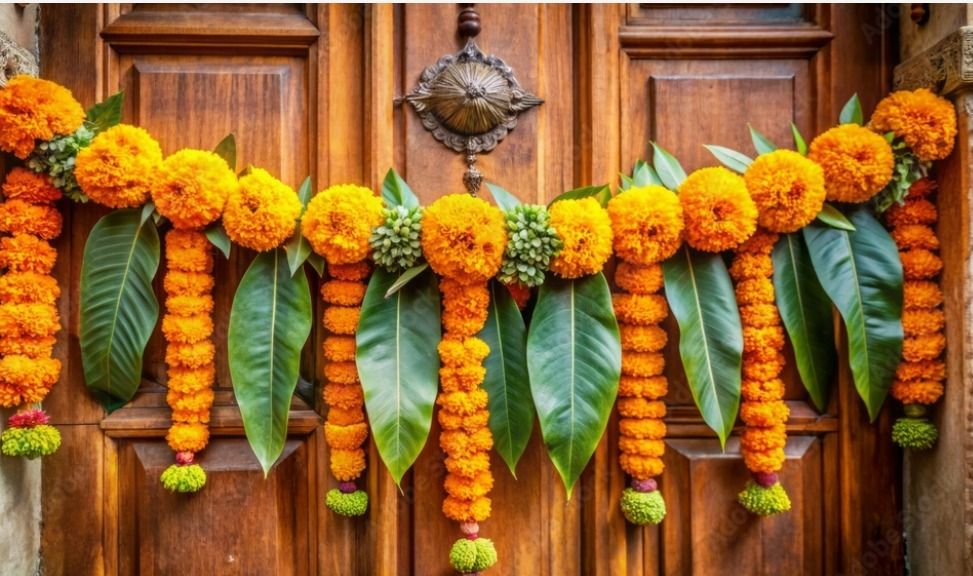
Traditional Toran (image source: Adobe)
Traditionally crafted using natural elements like mango leaves and marigold flowers, it is believed to absorb polluted air and allow only fresh air into the home. Mango leaves are thought to ward off negative energy, creating a sense of calm and relief, while the vibrant orange marigolds help repel evil eyes and insects with their color and scent. These beautiful adornments are commonly placed at the entrances of homes, temples, and offices, serving as a welcoming gesture of warmth and respect for visitors. Mythologically, torans are used to invite the blessings of Goddess Lakshmi, especially during festivals like Diwali, Holi, and Dussehra. They also ensure prosperity and good fortune during marriage ceremonies. Decorating with torans is believed to bring positivity and enhance the beauty of the home, blessing everyone who enters.
Let’s take a look at different types of Toran:
Floral Toran
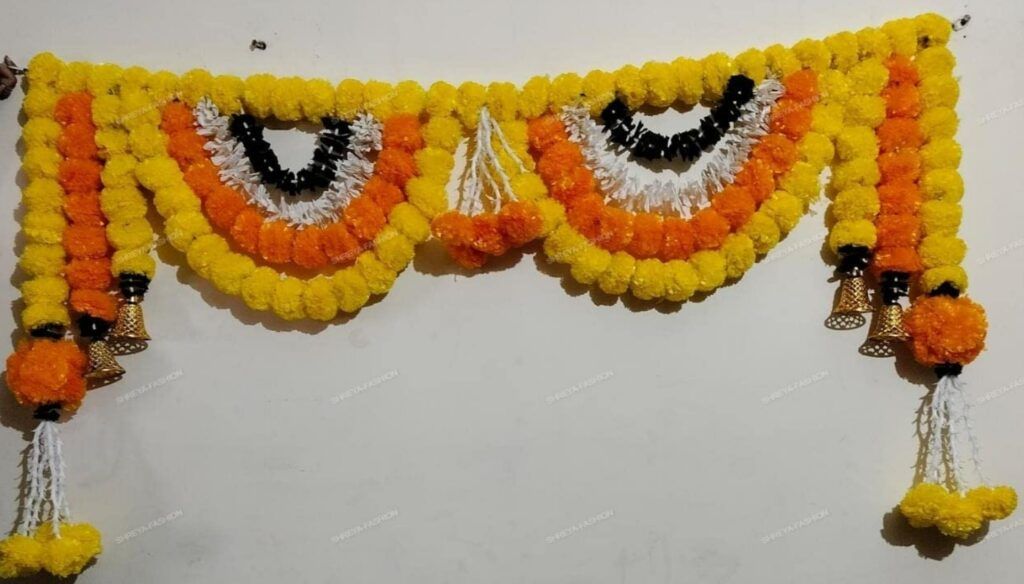
Floral toran (image source: Coolboss)
Made from various flowers like marigolds, roses, and jasmine, these vibrant decorations are widely used during festivals such as Diwali, Gudi Padwa, and Navratri, and they are hung on doorways to create a positive atmosphere and attract positive energy. In South India, flowers like jasmine, lotus, and coconut leaves are used to decorate temples during festivals like Pongal and Onam.
Beaded Toran
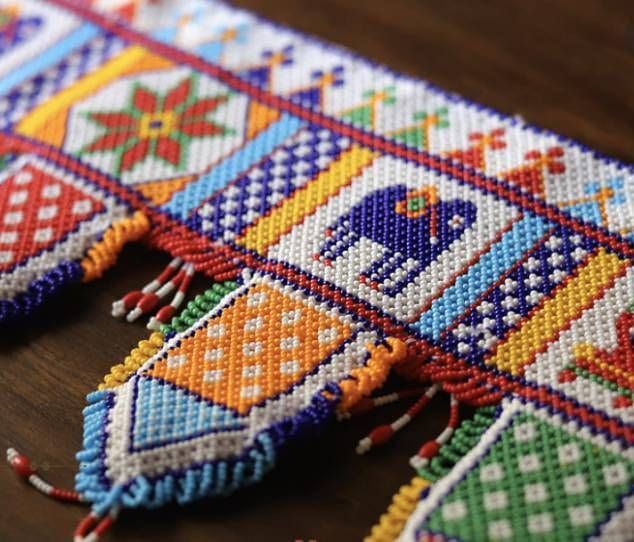
Bead Toran from Saurashtra (image source: Pinterest)
It is crafted using a variety of beads in different sizes and colors. Especially prominent in the Gujarat region, like Saurashtra, this toran is called Moti Bharat. This beadwork in Gujarat has a long history. It is often created by tribal women who make these torans, incorporating beads from materials like glass, terracotta, or even plastic. These beaded torans are highly valued for their craftsmanship.
Cloth Toran
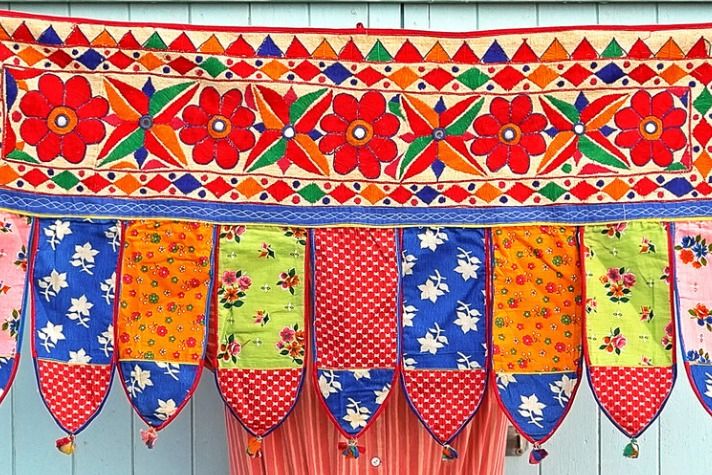
Tribal cloth toran (image source: Indian Textile Company)
It is typically crafted from fabrics like cotton or silk and adorned with intricate embroidery. The patterns often feature traditional motifs such as paisleys, peacocks, or floral designs. For example, the Rabari community of Gujarat is known for making vibrant torans, especially during the festival of Navratri, where decorative hangings play a significant role in welcoming deities into homes. These torans are usually made by women and can be easily customized to reflect personal style and cultural traditions.
Bandhanwar of Gujarat
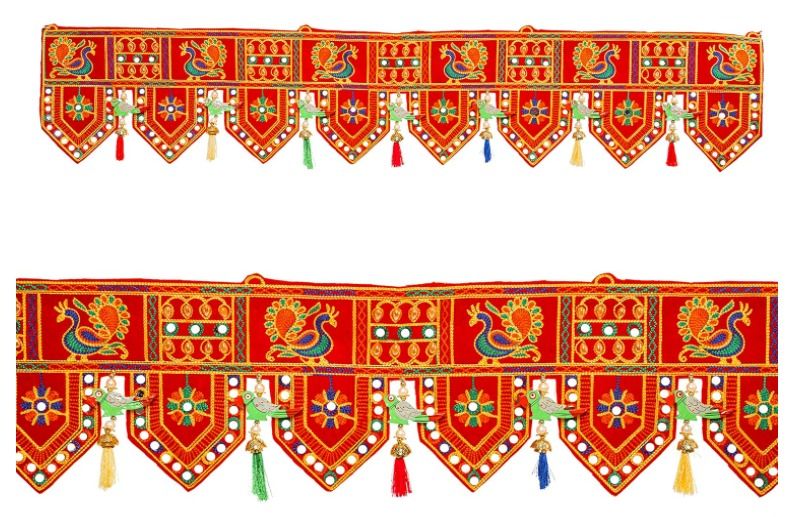
Bandhanwar (image source: Amazon)
It is a traditional toran of Gujarat used to warmly welcome guests into homes. These vibrant decorations often feature intricate designs with motifs of birds, animals, flowers, and other auspicious symbols. Embellished with beads, mirrors, and detailed embroidery, these door hangings add a cultural touch. Particularly famous in the Kutch region, they are a beautiful reflection of Gujarat’s rich heritage and craftsmanship.
Take a look at Toran motifs, commonly seen in various Indian art forms.
Toran Motif in Warli Art
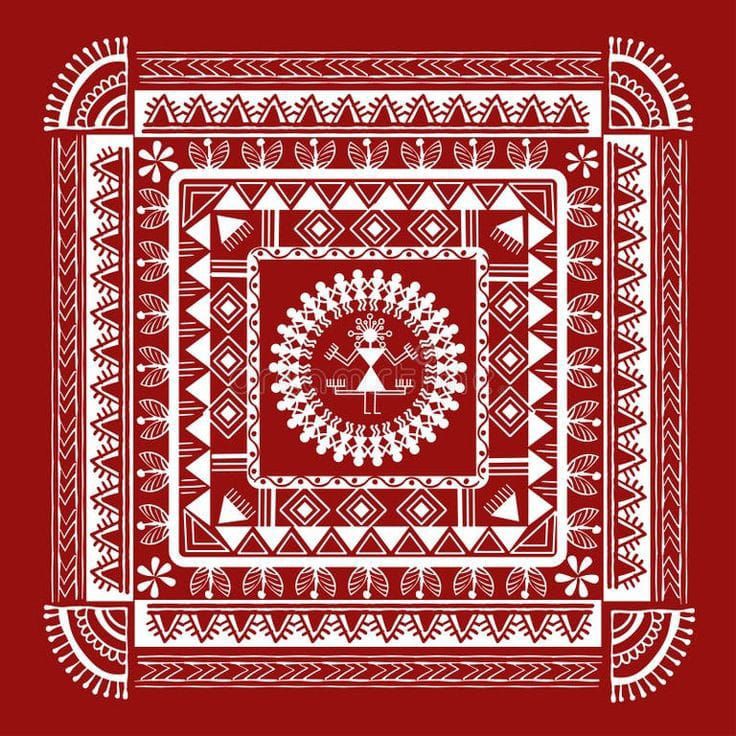
Warli Tribal Art (image source: Pinterest)
In Warli art, the toran motif surrounds the lagna chowk. These shapes symbolize leaves, flags, or the simple toran. The motifs are positioned along the borders of the artwork to enhance its visual appeal and draw attention to the central elements of the painting.
Toran in Mata Ni Pachedi
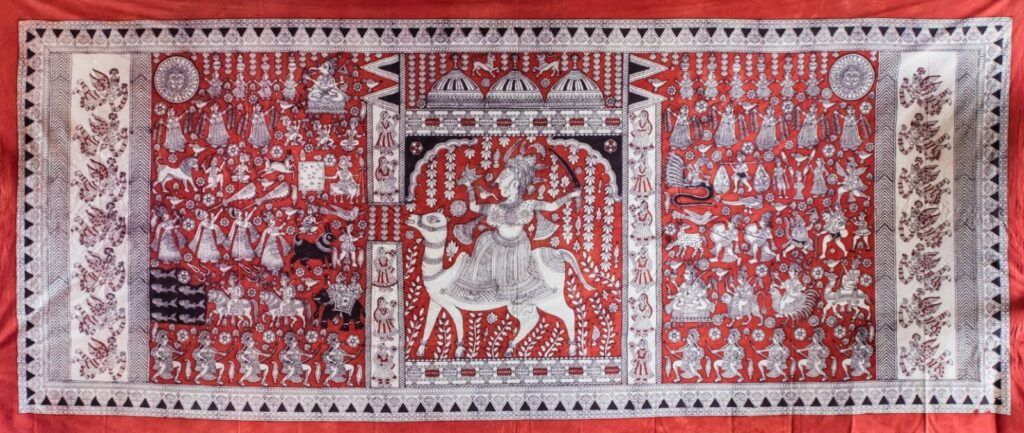
Traditional Mata Ni Pachedi (image source: Google Arts & Cultures)
In Mata ni Pachedi art, toran frames the central figure of the artwork. These motifs are represented through adorned geometric patterns, flowers, and leaves, adding a beautiful touch to the overall composition.
Toran Motifs in Bhil Pithora Painting
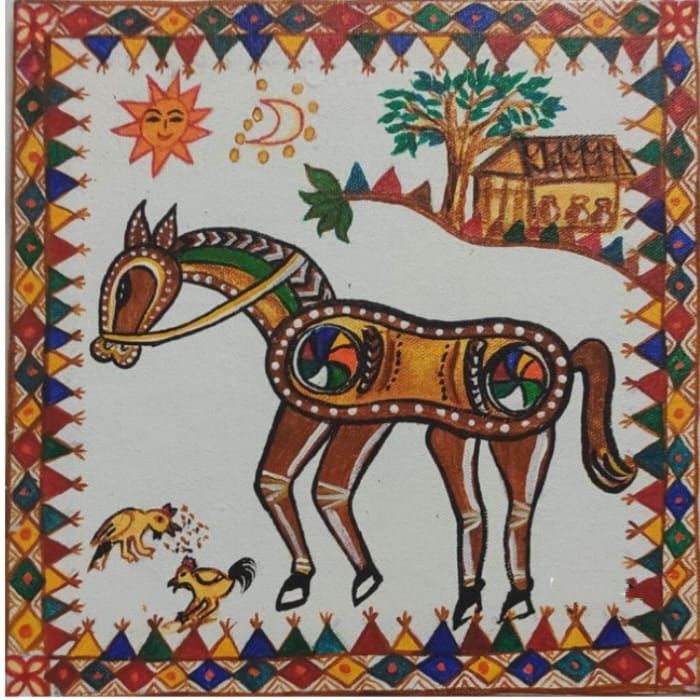
Pithora Painting by Kavita (image source: Indian Folk Art)
In Bhil Pithora painting, the toran motifs are beautifully incorporated as decorative elements, adding a vibrant touch to the artwork. Similar to other Indian art forms, these motifs are represented using geometric patterns and are often placed around the borders of the painting. The multicolored decorations of the toran enhance the visual appeal in the artwork.
Toran Motifs in Cheriyal Paintings
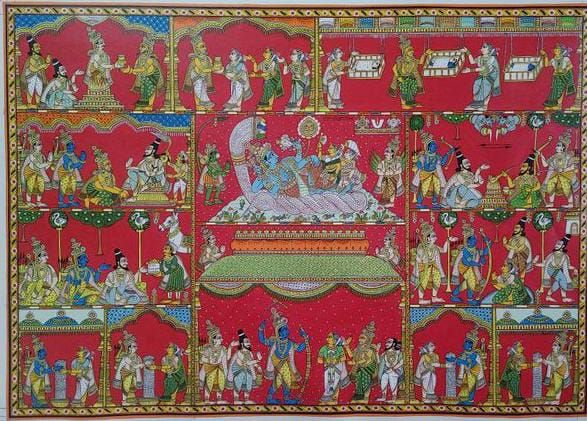
Cheriyal Art in Ramayana story (image source: Pinterest)
In the Cheriyal painting shown above, toran motifs are skillfully decorated inside the small panel, adding a captivating visual appeal and enhancing the storytelling experience. In this Ramayana-themed artwork, the toran motifs serve to attract attention toward the center, drawing the viewer’s eye to the heart of the narrative. These motifs not only beautify the artwork but also provide a sense of structure, making the piece more visually cohesive.
In Conclusion,
Nowadays, there is a wide variety of torans available in the market, and even today, people hang them on the entrance of doors during festivals or ceremonies. In present times, torans come in various forms, from printed or dyed fabrics to crystal-embellished ones that add a sparkling touch, blending traditional and modern decor. Bead and bell torans, made with colorful beads and small bells are common in every home. For those seeking eco-friendly options, recycled materials are used to craft sustainable torans.
To learn more about Indian art and artists, download the Rooftop app from the App Store or Google Play to stay updated on our upcoming art events and workshops. Stay tuned to rooftop blogs and follow us on @rooftop_app.
By Shrushti Patel